![]()
![]()
![]()
Use LEFT and RIGHT arrow keys to navigate between flashcards;
Use UP and DOWN arrow keys to flip the card;
H to show hint;
A reads text to speech;
8 Cards in this Set
- Front
- Back
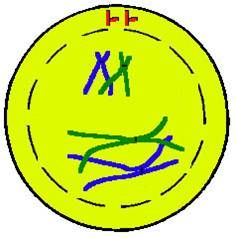
Sexual Reproduction
|
requires fertilization (one sex cell from each parent joins together)Division of a parent cell (diploid) into four daughter cells, called “gametes” (haploid – half a set of chromosome), with different genetic information
Occurs in germ cells (sex cell – egg, sperm) for producing offspring (new organisms) Meiosis I: Prophase I, Metaphase I, Anaphase I, Telophase & Cytokinesis I Meiosis II: Prophase II, Metaphase II, Anaphase II, Telophase & Cytokinesis II |
|
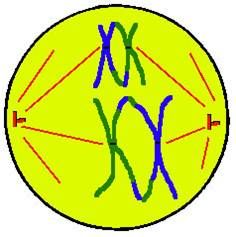
Homologous
|
chromosomes are separated into two daughter cells
Follows stages similar to Mitosis |
|

Chromosomes
|
form and each chromosome pairs with its homologous chromosome; called a tetrad – four chromatids
|
|
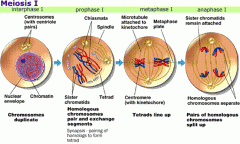
How it happens
|
Tetrads line up in the middle, equatorial plane, of the cell.Tetrads line up in the middle, equatorial plane, of the cell
separate and move away from each other to opposite poles of the cell Each is genetically different from the original cell due to crossing-over.Nuclear envelope forms Cytokinesis occurs resulting in two daughter cells Daughter cells are NOT identical due to crossing-over in prophase I |
|
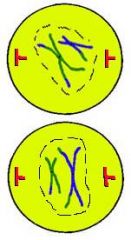
Nondisjunction
|
can occur when homologous chromosomes do not separate during anaphase I
There is an uneven distribution of chromosome to the two daughter cells, which may result in one daughter cell not having any chromosomes at all At this stage, there is a higher risk of producing nonviable cells (not able to reproduce) during meiosis II Genetic mutations in meiosis CAN be passed to offsprings.can occur when homologous chromosomes do not separate during anaphase I There is an uneven distribution of chromosome to the two daughter cells, which may result in one daughter cell not having any chromosomes at all At this stage, there is a higher risk of producing nonviable cells (not able to reproduce) during meiosis II Genetic mutations in meiosis CAN be passed to offsprings |
|
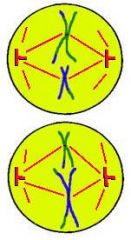
Chomosones
|
Chromosomes form
Nuclear envelope disappears |
|
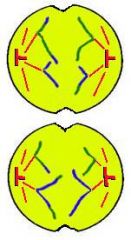
|
Nuclear envelope forms
Cytokinesis occurs resulting in four genetically different gametes |
|
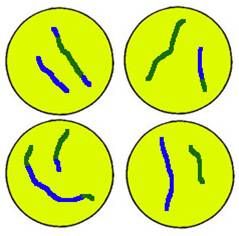
Nondisjunction
|
can occur when sister chromatids do not separate during anaphase II
There is an uneven distribution of chromatids to the four gamete cells, which may result in one gamete having too much or no chromatids at all There is still risk of producing nonviable cells at this stage, but lower than in meiosis I Example: Trisomy 21 (Down Syndrome) – 3 copies of chromosome 21, instead of 2; can result in shortened lifespan, or death, of the organism Genetic mutations in meiosis CAN be passed to offsprings |

